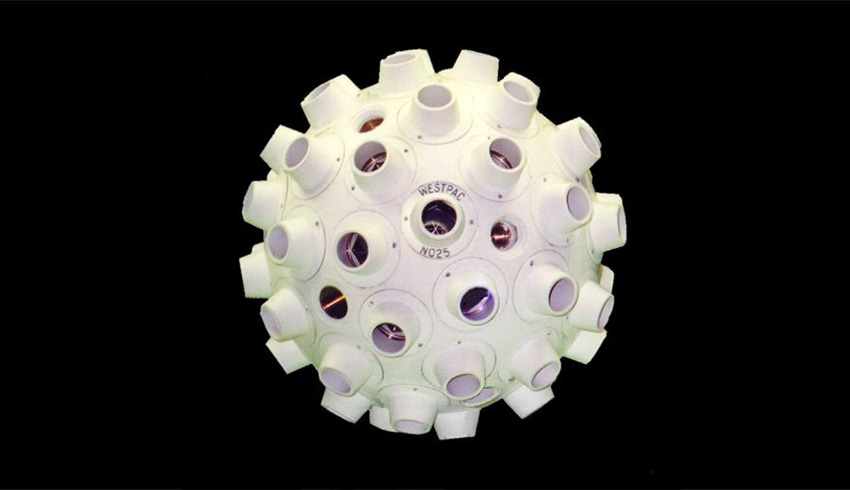After 21 years of operation, the satellite continues to provide EOS with unique capabilities for the development of advanced communication technologies and devices.
EOSCOM was launched on 17 July 1998 from Baikonur Cosmodrome in Kazakhstan. The satellite design, fabrication and placement in orbit was conceived, planned and funded entirely by EOS, with the Russian Space Agency providing support under contract to EOS.
At the time of its launch, EOS designated the satellite as 'Westpac' to recognise the key role of the Western Pacific Laser Ranging Network (Westpac) in experiments associated with the initial science program for the satellite. The Westpac organisation is a multi-national collaboration in space research and operations.
Speaking on the 21st launch anniversary of EOSCOM, Dr Ben Greene, the group CEO of EOS, welcomed the milestone, saying, "EOS is proud of the contributions to science made through the use of EOSCOM. Knowledge acquired through the satellite is being applied to the protection of our environment and to mitigate other societal threats."
EOS has provided key office holders in Westpac since its foundation in Canberra in 1994. Five Westpac member countries have commercially acquired and deployed EOS space technology and products.
After completion of the science program in 2013, the satellite was renamed EOSCOM to reflect its long-term mission as an EOS communication test bed. Key missions undertaken during the initial science program included:
- Relativistic effects on photons: EOSCOM carries optical retro-reflectors to facilitate laser tracking with low power laser beams. Prior to the launch of EOSCOM all satellite retro-reflectors were designed to implement physical corrections required be relativity, but their successful operation could not exclude other important physical theories.
- Gravity field probing: Prior to the launch of EOSCOM the earth’s gravity was being mapped to high accuracy using laser tracking of satellites. By 1995 this activity was limited in its progress by knowledge of the location of the centre of mass of each spacecraft, relative to the reflecting surface providing the laser tracking signal. Gravity acts only through the satellite centre of mass.
- Global warming and sea levels: The gravity field and laser tracking accuracy improvements achieved from 1998 now allow special-purpose satellites to monitor sea level and ice mass globally, with sea level accuracy of three millimetres if data is averaged for 12 months. EOS has made strong contributions to these developments, in part through technologies developed through EOSCOM.
"Despite all it has already achieved, EOSCOM is still a leading space platform for investigating quantum entanglement scales, and for developing long-range, ultra-wideband optical communications technology," Dr Greene added.
These three science missions have been successful, contributing to the pool of technology now being used against major global challenges. EOSCOM is now serving in its long-term role in supporting development of EOS products for communications and SSA (space situation awareness). This role leverages the unique design elements of EOSCOM in several key areas.
These science missions have included a range of specialist missions, including:
- Ultra-wideband optical bandwidth: Almost all space communication today uses microwave technology, which is limited in bandwidth to around 500 GigaHertz. This limit will be reached in the next few years, and there is global demand for higher bandwidth. Optical communications using optical fibres can provide 20 TerraHertz, or 40 times the bandwidth of microwave technology. However, the delivery of those higher optical bandwidths from point-to-point in space, without a fibre to contain the optical energy, has never been achieved. New devices are needed. A key part of communication device development and qualification is testing, and EOSCOM is the only optical communication test satellite capable of testing transmit and receive bandwidths of 20 TerraHertz in space.
- Long range quantum entanglement: The management and control of entangled photons is fundamental to the development of optical quantum communications. Recently, the Chinese Micius satellite achieved fame when it demonstrated the preservation of photon entanglement over 1,200 kilometres. This was almost 10 times longer than previously achieved. The EOSCOM satellite was designed to allow entanglement testing over 2,500 kilometres and these new limits will be explored soon.
"The information and data EOS can extract from EOSCOM operations is a major advantage to EOS, as the sole owner of EOSCOM, in the development of the next generation of communication systems. The satellite is important in our programs for progressive bandwidth extension as well as more radical leaps in quantum communications," Dr Greene added.
EOS Defence Systems specialises in technology for weapon systems optimisation and integration, as well as intelligence, surveillance and reconnaissance for land warfare.
EOS Space Systems specialises in applying EOS-developed optical sensors to detect, track, classify and characterise objects in space. This information has both military and commercial applications, including managing space assets to avoid collisions with space debris, missile defence and space control.

